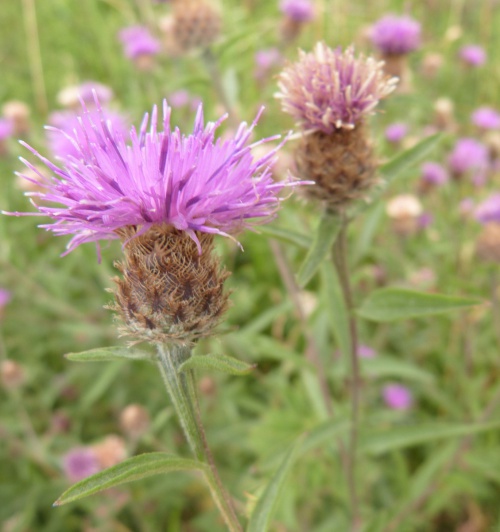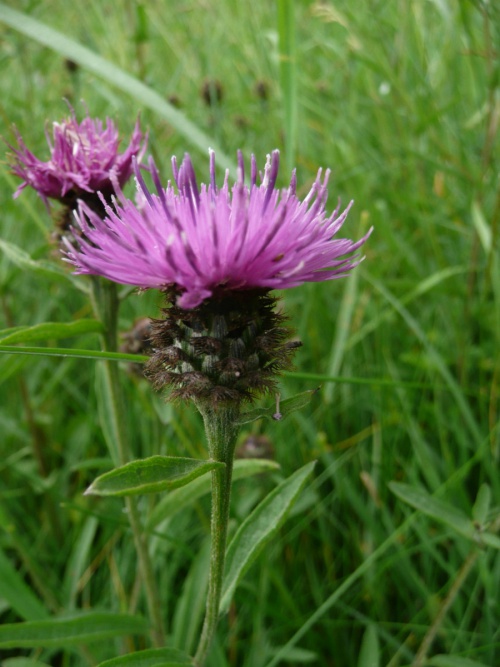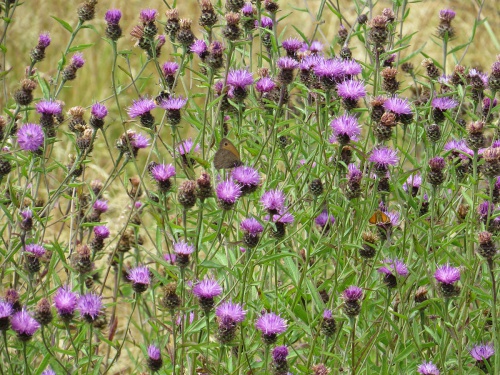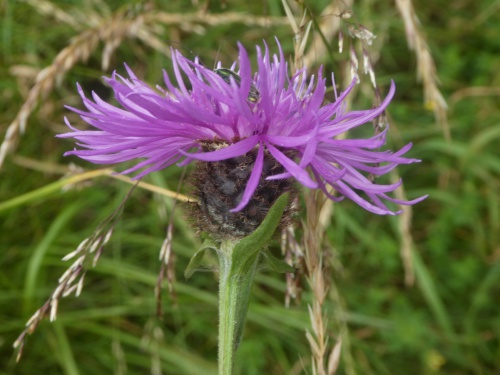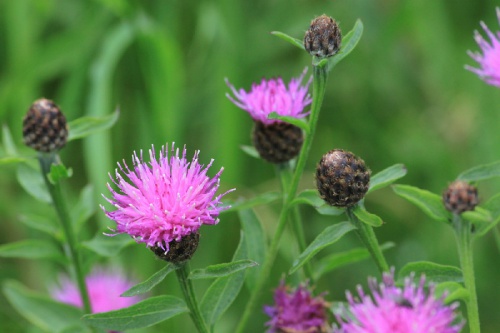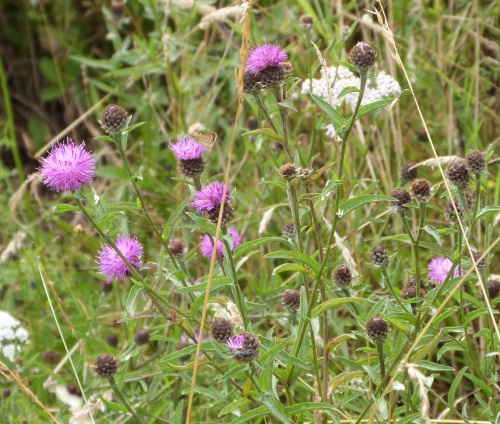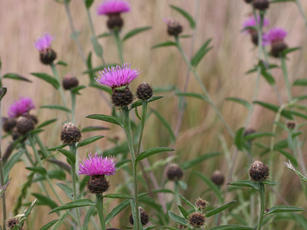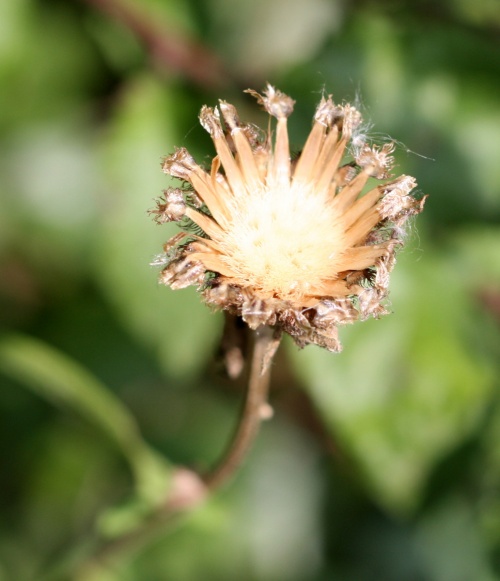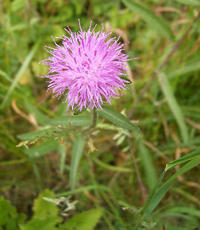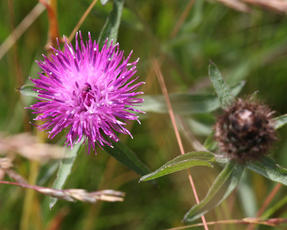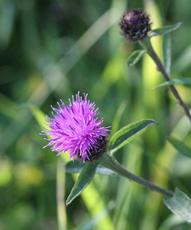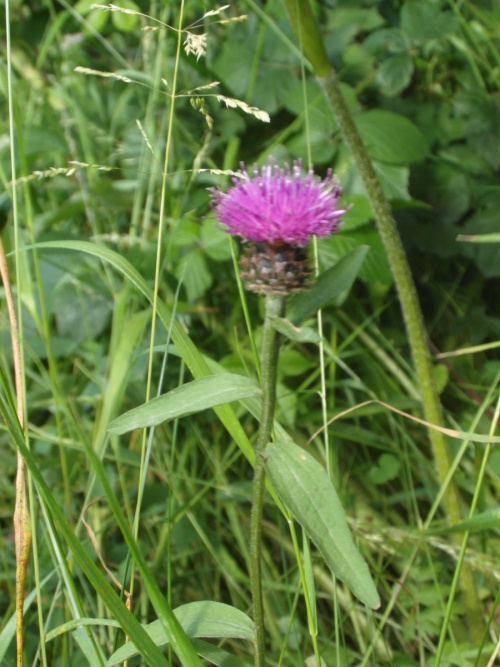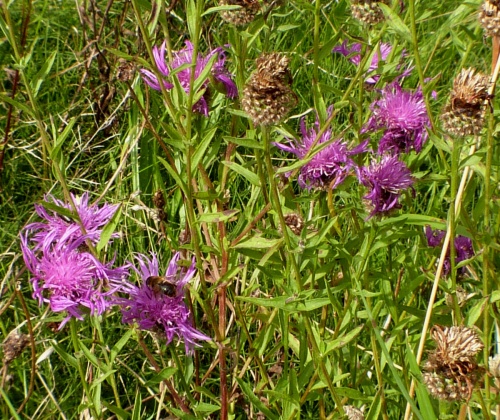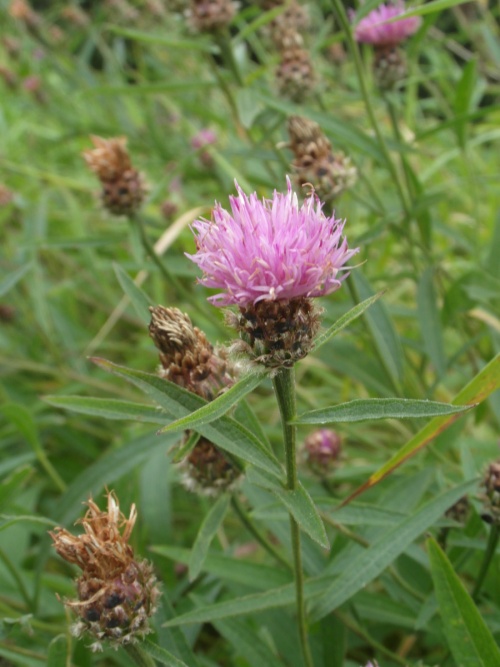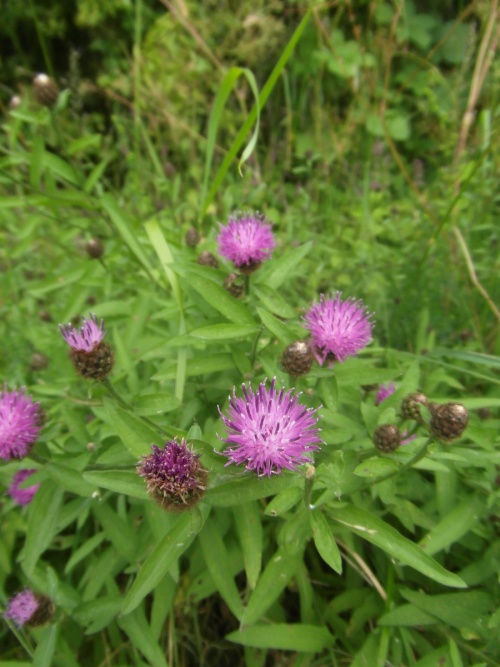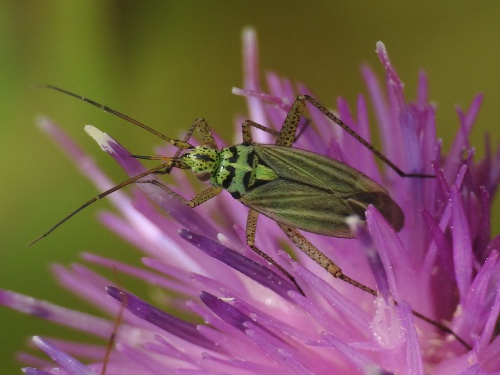Common Knapweed - Centaurea nigra sensu lato (=nigra/debauxii)
Medium to tall hairy plant with erect stems, branched or unbranched. Thickened below the flowerhead. Flowerheads purple, 20 to 40 mm, solitary or in branched clusters, the florets all equal in length. Flower bracts with a broad, blackish triangular fringed appendage, concealing the adjacent bracts. Centaurea nigra and Centaurea debauxii are very similar and require detailed examination (see ID aids below) - there are also other quite similar species and hybrids. Unless you are able to get expert confirmation to species level, please record Common Knapweed as Centaurea nigra sensu lato.
Greater Knapweed Centaurea scabiosa.
C. debeauxii may be present, on more calcareous soils or introduced via seed or building rubble; it was formerly considered to be C nigra subsp. nemoralis.
Centaurea jacea (Brown Knapweed) has brown phyllaries and is a very rare alien species. There is only one VC55 record from Evington in 2018, but it may be introduced in wildflower mixes. Its hybrid with C. nigra (C. x gerstlaureri) has dark brown phyllaries and has not been found in VC55.
See the Identification Aid below for help on separating the Centaurea nigra look-alikes.
The Centaurea species and the subspecies in the table below all have black phyllaries with long, thin teeth in the apical portion.
For photos of phyllaries see here.
Note that Centaurea jacea (Brown Knapweed) has brown phyllaries and is a very rare alien species. There is only one VC55 record from Evington in 2018, but it may be introduced in wildflower mixes. Its hybrid with C. nigra (C. x gerstlaureri) has dark brown phyllaries and has not been found in VC55.
To identify Centaurea you need to examine the phyllaries along the mid-line of the inflorescence only.
Notes
1. Despite its name, C. debeauxii does not always occur on chalk. It may be introduced in wildflower seed mixes or with building materials.
2. This variety is often introduced in wildflower seed mixes and could be confused with Greater Knapweed, Centaurea scabiosa, but the phyllaries are different.
Geoffrey Hall
Version 2: 03 May 2022
Roadsides, flower meadows, hedgebanks and waste ground.
June to September.
Perennial.
Very common throughout Britain.
Very common in Leicestershire and Rutland. In the 1979 Flora survey of Leicestershire it was found in 561 of the 617 tetrads.
Leicestershire & Rutland Map
Enter a town or village to see local records
MAP KEY:
Yellow squares = NBN records (all known data)
Coloured circles = NatureSpot records: 2020+ | 2015-2019 | pre-2015
UK Map
Species profile
- Common names
- Hardhead, Common Knapweed, Black Knapweed
- Species group:
- Wildflowers
- Kingdom:
- Plantae
- Order:
- Asterales
- Family:
- Asteraceae
- Records on NatureSpot:
- 529
- First record:
- 01/07/1998 (John Mousley)
- Last record:
- 28/10/2023 (Smith, Peter)
Total records by month
% of records within its species group
10km squares with records
The latest images and records displayed below include those awaiting verification checks so we cannot guarantee that every identification is correct. Once accepted, the record displays a green tick.
In the Latest Records section, click on the header to sort A-Z, and again to sort Z-A. Use the header boxes to filter the list.


